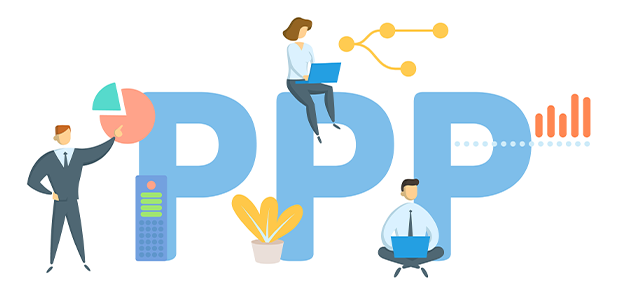
The Startup Guide to Establishing Public-Private Partnerships
As an executive deeply immersed in future foresight and private-public partnerships, I'd like to highlight the pivotal role of empathy and active listening in navigating this dynamic landscape. In our relentless pursuit of more efficient, effective, and innovative solutions to the myriad complex challenges of our era, startups often emerge as beacons of innovation. However, they frequently find themselves facing resource and expertise gaps and fierce competition to gain access to the necessary support.
This article aims to provide startups with valuable insights into the significance of public-private partnerships (PPPs) while emphasising the importance of empathy and active listening in fostering these collaborations. By sharing risks and rewards, PPPs offer startups a unique opportunity to work with established entities, access essential resources, and collectively address pressing public needs.
Understanding Public-Private Partnerships: What is a public-private partnership?
A public-private partnership (PPP) represents a collaborative alliance between a government entity and a private sector organisation. Together, they meticulously plan, fund, execute, and manage projects or services designed to serve the greater public good.
This synergistic relationship is characterised by shared responsibilities, risks, and rewards. The government brings regulatory authority and resources to the table, while the private sector contributes innovation, expertise, and funding. PPPs span various sectors, such as technology, infrastructure, healthcare, aviation, and education, all driven by a common goal: delivering efficient, practical solutions to public needs.
The Power of the Partnership: What are the benefits of pursuing public-private partnerships?
For startups, PPPs are akin to a golden ticket. They can help unlock access to invaluable government resources, expertise, and financial support, propelling rapid growth. Startups can leverage established government networks, gaining crucial exposure and building credibility while scaling their operations.
On the flip side, governments benefit from PPPs by sharing costs, improving efficiency, and reducing risks. Collaborating with startups allows them to tap into innovative solutions, optimise service delivery, and allocate public budgets more effectively.
Ultimately, PPPs should translate into public benefits, offering sustainable and creative answers to society's pressing challenges.
Navigating the PPP Terrain
Entering into a PPP is a strategic decision that necessitates careful planning. These collaborations often involve navigating complex governmental regulations, time-consuming processes, and funding uncertainty. Balancing varying interests and objectives between government bodies and corporations can be challenging and may impede project progress.
Additionally, as PPPs are designed to deliver public projects and services, they undergo intense public scrutiny. Hence, startups must commit to transparency, accountability, and ethical practices to protect the public interest.
The Role of Empathy and Active Listening: Fostering Strong PPPs
To establish and nurture successful PPPs, startups must cultivate empathy and active listening. Here's how:
- Empathise with Stakeholders: Understand the needs, concerns, and expectations of your government partners, private sector collaborators, and the public. By putting yourself in their shoes, you can tailor your solutions to better align with their objectives.
- Listen Actively: Actively listen to all stakeholders, from government officials to community members. Paying attention to their feedback, ideas, and concerns demonstrates your commitment to a collaborative approach.
- Build Trust: Trust is the foundation of any successful partnership. Show that you genuinely value the contributions and perspectives of all parties involved. Trust opens the door to effective problem-solving and shared innovation.
- Adapt and Evolve: Be flexible and willing to adapt your strategies based on the insights gained through active listening. This adaptability is crucial for addressing changing circumstances and ensuring the partnership remains effective.
- By incorporating empathy and active listening into the PPP framework, startups can forge stronger, more resilient partnerships that drive innovation and create meaningful solutions for the public.
Creating a thriving PPP as a startup demands a structured approach
- Define Your Purpose: Start by vividly defining your objectives and the problem your partnership aims to solve. This clear vision will resonate with potential partners and project beneficiaries.
- Conduct Thorough Research: Dive deep into understanding the issue, market dynamics, regulatory landscapes, and key stakeholders—network with government agencies, private sector partners, and community organisations who share your vision.
- Seek Legal and Financial Expertise: Collaboration with legal and financial experts is indispensable. They'll ensure legal compliance and assist in building a robust business model, identifying revenue streams, risk-sharing mechanisms, and financing options.
- Emphasise Organisation: Establish a transparent organisational structure from the outset. Clearly outline stakeholder roles, responsibilities, and decision-making processes to manage expectations and conflicts.
- Prioritise Communication: Maintain open communication channels with partners and stakeholders. Transparent, honest communication informs stakeholders of the partnership's progress and garners public support.
- Cultivate Collaboration: Fostering a cooperative mindset among all partners is essential. Encourage a culture of trust and collaboration, as success hinges on achieving shared goals.
- Prepare for the Unforeseen: Flexibility is vital as plans may not always unfold as expected. Develop strategies to identify, assess, and manage financial, operational, and legal risks.
- Measure and Adapt: Implement rigorous monitoring and evaluation systems to track project progress, leveraging data to inform decisions and adapt strategies as needed.
- Celebrate and Learn: Acknowledge achievements and use failures as stepping stones for improvement.
In Conclusion
By now, you should have a comprehensive understanding of public-private partnerships, their potential benefits for startups, the associated challenges, and strategies for building successful collaborations.
Establishing such a partnership can be demanding, but when executed effectively, it yields dividends for startups, partners, and the public they aim to serve.

